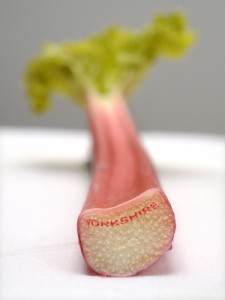
More evidence that low-calorie sweeteners are bad for your health
Studies show that artificial sweeteners can raise the risk of hypertension, metabolic syndrome, type 2 diabetes and heart disease, including stroke.

It is difficult to imagine rhubarb being elevated to the ranks of an international fine food.
But since 2013, when the European Commission awarded Yorkshire forced rhubarb Protected Designation of Origin status, it became the 41st product from Britain to acquire this exclusive label.
Yorkshire forced rhubarb – which is currently in season – now enjoys the same cachet as that of Cornish sardines, Melton Mowbray pork pies, Cornish pasties and Swaledale cheese.
Until the early 19th century rhubarb was only grown outdoors and harvested from late spring through till early autumn.
Grown in the dark
Forced rhubarb is grown in the dark in greenhouses. It is a labour intensive process which means that this variety is always far more expensive than the other rhubarb which comes into the shops in early summer.
Forcing is the process whereby rhubarb crowns are taken indoors (after they have been exposed to sufficient frost), deprived of food and light but in an ambient temperature of around 40º-50º C. This kick-starts (forces) the crowns to throw out stalks. Once inside the rhubarb stalks grow so quickly it is possible, if it is quiet in the shed, to hear the ‘popping’ sound as the stalks are pushed out from the bud.
All the harvesting takes place by candlelight The first shoots are usually ready to harvest four to six weeks after coming into the sheds which is usually in early January. The lack of light ensures the forcing process that draws energy from the plants’ roots. This makes the resulting rhubarb stalks more slender, sweeter and infinitely more tender than the robust green outdoor variety.
This is a great time to enjoy cooking with this unique British delicacy. Here’s two recipes to get you started.
Rhubarb, orange and ginger jelly
You can make this with any variety of rhubarb, but if you make this with forced rhubarb you will only need about ¼ of the amount of sugar, so taste as you go.
Ingredients
Method
1 Chop the rhubarb into small chunks and put in a saucepan with everything apart from the ½ pint of orange juice.
2 Cook on a low heat until the rhubarb is very soft, liquidise the mixture and then push it all through a sieve.
3 Measure the amount of liquid that you have to determine how much gelatine to use 3 sheets to a pint will give you a soft set jelly that you can set in glasses whereas 4 to a pint will give you a firmer jelly that you can set in a mould and then turn out.
Rhubarb and custard tart
You can also make this with any variety of rhubarb, but if you make this with forced rhubarb 50g of sugar for the filling.
Ingredients
For the sweet pastry tart case
For the rhubarb and custard filling
Method
1 Pre heat the oven to 150º C (300º F, gas mark 2).
2 To make the pastry case rub the butter into the flour until the mixture resembles fine breadcrumbs. Then, stir in the sugar and then the beaten egg to bind the mixture into a soft dough. Chill for half an hour and then roll out to fit a greased 23cm tart tin.
3 Cut the rhubarb into chunks about 3cm long and cook in a pan with the sugar until just starting to soften. Remove from the heat and arrange in the base of the tart.
4 Mix together the eggs and cream, pour over the fruit.
5 Cook for 15- 20mins until the filling is just set.
Good for you, too!
Although we tend to use these brightly coloured stalks like fruits, they are actually vegetables and members of the buckwheat family. Forced rhubarb is sweeter than regular rhubarb, but it doesn’t just taste nice. It also has health benefits that we are only just discovering.
Rhubarb is a good source of fibre and contains moderate levels of vitamin C. Studies show that the including rhubarb in the diet can help reduce cholesterol levels.
Rhubarb contains calcium as well as notable amounts of vitamin K, an especially important nutrient for protecting against bone fractures as we age. Adequate vitamin-K levels in the diet can also protect against the kind of neurological damage that is linked to Alzheimer’s disease. Rhubarb also has useful amounts of lutein which can reduce the risk of age related macular degeneration
Forced rhubarb has a different chemical profile from other varieties and is particularly high in antioxidant anthocyanins (which give it its delightful pink colour). In 2010 researchers at Sheffield Hallam University found that baking or slow cooking British garden rhubarb for 20 minutes boosted levels of these anti-cancer phytochemicals.
So go ahead and indulge in this seasonal treat.

Please subscribe me to your newsletter mailing list. I have read the
privacy statement